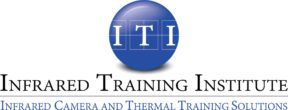Black Body Type and Emissivity
Although a blackbody is actually only a theoretical ideal, an object can be formed which approximates it. A law closely related to the blackbody is Kirchhoff’s law that defines reflection, transmission, absorption and radiation.
α + ρ + τ = 1
where, α : absorptance ( = ε : emissivity)
ρ: reflectance
τ : transmittance
Also, absorptance equals emissivity, and so emissivity can be described by reflectance and transmittance. In order to obtain a true temperature of an object, it is necessary to obtain the emissivity correctly. Therefore, the emissivity of the object has to be measured by using of blackbody-type source which is nearest to a blackbody as much as possible. So it is necessary to design a blackbody-type source. The blackbody-type source can be designed to meet the conditions pointed out by Kirchoff that “the
radiation within an isothermal enclosure is a blackbody radiation”. As a blackbody-type source for a measurement must radiate outside of the enclosed surface, a small hole is cut through the wall of the enclosure not to disturb the condition of blackbody. The radiation leaving this hole should closely simulate that from a blackbody. When the diameter of the hole is as 2r and the depth is as L, if L/r is equal or more than 6, it is used as a blackbody –type source for practical use.
Following Fig. 6.3 is an example of a blackbody-type source according to conditions of blackbody.

Emissivity is the ratio of energy radiated from an object to the exterior and energy radiated from blackbody. The emissivity varies with the surface condition of the object and also with temperature variation and wavelength. If this value is not accurate, then the true temperature cannot be measured. In other words, a variation or change in emissivity will cause a change in the indications.To approach the true temperature therefore,
(1)The emissivity must approximate 1. (→ The measured object must be nearly a blackbody.)
(2)The emissivity must be corrected. (→ The emissivity of the measured object must approximate to 1 by way of calculation.)
Therefore, in order to perform correct measurement for true temperature, the emissivity is determined as follows:
1) Check by way of literature
Various literature carries a physical constants list, but if the measuring condition at that time is not satisfied, the constants will not be usable. In such case the literature should be used only for reference.
2) Determination by ratio (1)
Confirm that the measured object in thermal equilibrium and the blackbody-type source is at the same temperature by using a contact-type thermometer. Then measure the object and the blackbody-type source with the radiation thermometer, and the energy ratio at that time will give the emissivity.
EK : ES = 1 : X
EK : energy of blackbody-type source
ES: energy of measured object
X: emissivity of measured object
*Indicated here is the ratio, not the temperature.
3) Determination by ratio (2)
Attach an object resembling a blackbody (blackbody part) to a heater, unify the temperatures of the measuring object and the blackbody part, and obtain the ratio of infrared radiation energies at that time. [* Same as in 2) above]
4) Comparison with blackbody surface
Make a very small hole in the measured object to satisfy the aforementioned blackbody conditions, and make the temperature of the entire object uniform. Then, using the emissivity correcting function of the camera, reduce the emissivity until the temperature of the point to be measured equals the temperature of the small hole measured at an emissivity of 1.The emissivity setting should be the emissivity of the object. (This applies only when the conditions are the same as at measurement.)
5) Comparison with blackbody surface
If a small hole cannot be made in the object, then the emissivity can be obtained by applying black paint to the object and reaching a thermal equilibrium through similar procedures. But since the painted object will not provide a complete blackbody, first set the emissivity of the painted object and then measure the temperature. Following Fig. 6.1 shows examples of blackbody paint.

For more information please call us: 1-409-861-0788 or toll-free at 1-866-861-0788.

